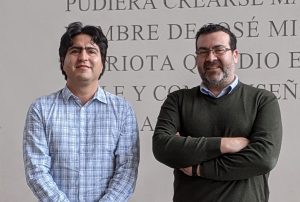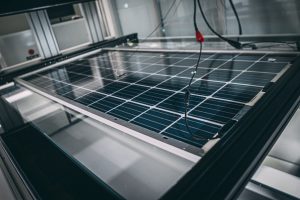This high-tech equipment allows the operation of photovoltaic panels to be analyzed with high precision, in a controlled environment and with conditions similar to those of the desert.
The Federico Santa María Technical University has innovative equipment that will improve research capabilities in the field of photovoltaic solar energy in our country. This is the A+A+A+ Solar Flasher Simulator unit with bifacial capacity, unique in South America, which is installed in the Solar Energy Laboratory on the San Joaquín Campus.
This simulator facilitates testing photovoltaic technologies under controlled conditions, allowing a series of studies on these panels, such as evaluating performance, temperature coefficients, estimating levels of degradation and verifying compliance with technical specifications, among others. .
This first level equipment was financed by the National Research and Development Agency (ANID) through the FONDEQUIP project N°EQM200183 “Indoor photovoltaic measurement and monitoring station-solar simulator”, developed by the USM with the support of the Pontifical University Catholic University of Valparaíso, University of Antofagasta, Andrés Bello National University, University of Concepción, University of Chile, Laborelec Latin America, ATAMOS-TEC and Fraunhofer Chile Research.
The academic from the Department of Electrical Engineering of the USM and the person in charge of the project, Dr. Patricio Valdivia, explains that “this simulator is a team for collaborative use by all the entities associated with the project, both universities that work on solar issues, as well as research institutions. +D, which ensures a high level of use. On the part of our University, the departments involved in the project are the Department of Electrical Engineering, Mechanical Engineering, Electronics and Physics”.
Functioning
How does this solar simulator work? As explained by Dr. Valdivia, “the equipment emits a beam of light for a very short time, around 100 milliseconds, but with a high solar spectrum, managing to carry out analyzes in a very short time prior to the significant increase in temperature in the panel. With this technology, we can do simulations and analyzes with environmental conditions and solar radiation similar to those of the desert”.

USM academics Rodrigo Barraza and Patricio Valdivia.
For his part, the academic from the USM Department of Mechanical Engineering, Dr. Rodrigo Barraza, comments that “the radiation emitted by this equipment is similar to solar radiation, but since it is obtained through lamps, we can control its intensity, which allows us, for example, to analyze the operation of the photovoltaic modules with respect to whether it meets the standard indicated by the manufacturer, compare how much efficiency it loses over time, fouling issues and failures”.
Dr. Barraza adds that these studies are not feasible without this simulator, since “the behavior of photovoltaic technology is affected by temperature, so in nature it is not possible to obtain the necessary conditions for this analysis, since operational temperature depends on a range of environmental factors. Instead, the equipment is a climate chamber and the lighting it receives is like the flash of a camera, maintaining a stable temperature”.
Worldwide research
For USM academics, this equipment will bring about a significant advance in the results of current and future research related to photovoltaic technology.
“This team will strengthen the USM solar energy research group, created in 2017 and which has been specializing in the operation and maintenance of photovoltaic plants. We have been awarded a series of projects related to this line, such as Fondef Idea ID: 21I10424, where we are evaluating the degradation of solar modules in Chilean desert conditions”.
“The precision of this equipment is very important, it will allow us to carry out research at the highest level, and without a doubt consolidate the solar energy group and make it a benchmark”, explains Dr. Barraza.
This analysis is shared with Dr. Valdivia, who also adds that with this team “we will be able to increase and deepen high-level research, raising the type of publication, its quality and its impact, both nationally and internationally.” world. In addition, we will be able to increase our collaborations with Chilean institutions that carry out research in solar energy, as well as carry out specialized advice on these issues, opening up a field of industrial relationship with energy generating companies and promoting the development of this clean technology in our country”, he concluded. .
The new solar simulator will be inaugurated next Friday, August 12, in a ceremony held at the USM Electromobility Laboratory at the San Joaquín Campus.














![[Img #74661]](https://thelatestnews.world/wp-content/uploads/2024/12/The-power-of-ultrasound-300x200.jpg)
Add Comment